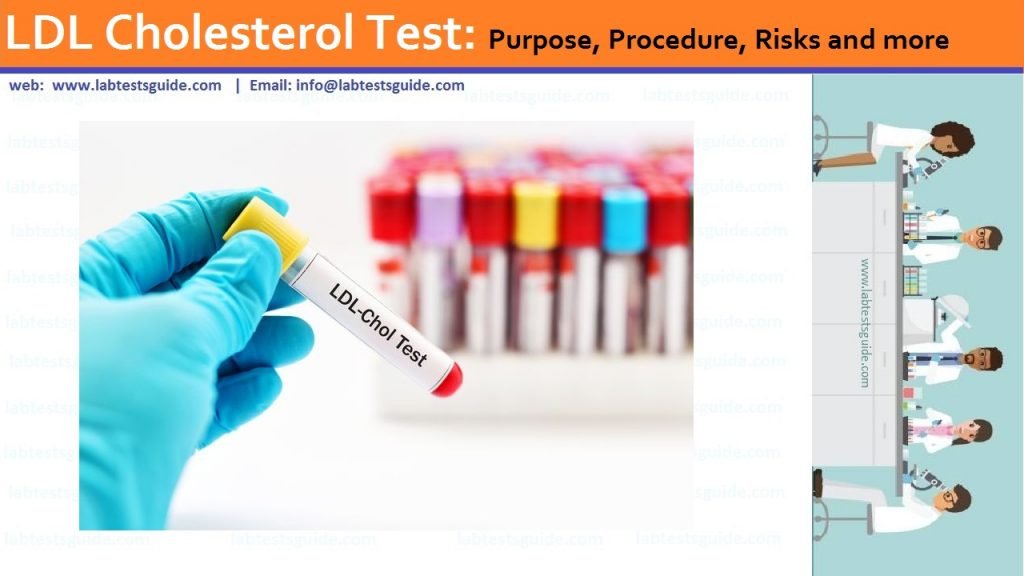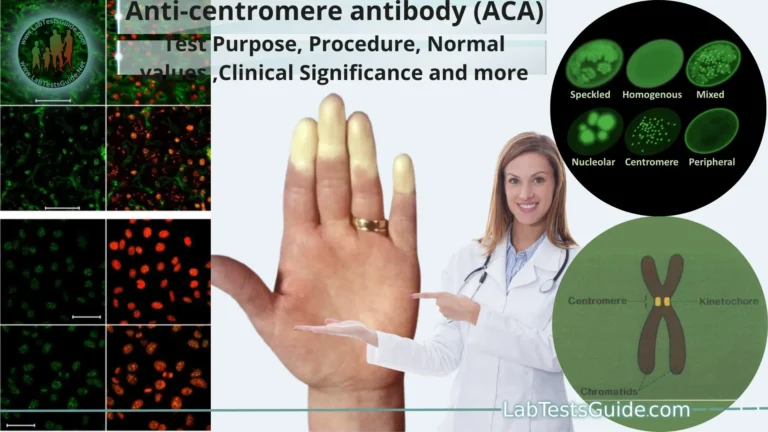Low-density lipoprotein (LDL cholesterol, LDL-C) is one type of lipoprotein that carries cholesterol in the blood. LDL-C consists mostly of cholesterol and similar substances with a small amount of protein. Most often, this test involves using a formula to calculate the amount of LDL-C in blood based on results of a lipid profile. Occasionally, LDL-C is measured directly.
Also Known As: LDL, LDL-C , Low-Density Lipoprotein Cholesterol
Test Panel: Cholesterol, HDL Cholesterol, LDL Cholesterol, Triglycerides, VLDL Cholesterol, Non-High Density Lipoprotein Cholesterol

Why Get Tested :
- Advised to evaluate the coronary artery disease risk.
- This can be advised as the part of a lipid profile.
When to get tested :
- Screening: as part of a regular health exam with a lipid profile.
- when no risk factors for heart disease are present.
- once every four to six years in adults.
- children should have a lipid profile screening at least once between the ages of 9 and 11 and then again between the ages of 17 and 21.
Sample Required:
- This test is done on the serum.
- Fasting sample is preferred. Advised the patient to fast for 12 to 14 hours.
- This test can be done on plasma as well.
- Can store serum or plasma at 4 °C for 4 days (can keep for 5 to 7 days).
Normal Value:
- Adult = <130 mg/dL
- Children = <110 mg/dL
Calculation of LDL
The LDL can be calculated by the following formula:
- LDL = Total cholesterol – ([triglycerides ÷ 5] – HDL)
- LDL = Total cholesterol – VLDL- HDL)
- LDL = Total cholesterol — (HDL cholesterol + 1/5 x Triglycerides)
NOTE: These formulas only help if the fasting triglycerides value is < 400 mg/ dl.
Increased LDL values are seen in:
- Familial hyperlipidemia type 2.
- Familial hypercholesterolemia.
- Glycogen storage diseases.
- Secondary causes are :
- Hypothyroidism.
- Nephrotic syndrome.
- Multiple myelomas.
- Dysglobulinemia.
- Liver disease with obstruction.
- Diabetes mellitus.
- Chronic renal failure.
- Diet high in cholesterol and saturated fats.
- Alcohol intake.
- Hepatoma.
Decreased values seen in:
- Hypolipoproteinemia.
- Hyperthyroidism.
- Hyperlipoproteinemia type 1.
- Chronic anemias.
- Hepatocellular diseases.
- Chronic pulmonary disease.
- Reye’s syndrome.
- Acute stress like a burn.
- Inflammatory joint disease.
Table showing the summary of characteristics of the lipoproteins
| Characteristics | Chylomicron | HDL | LDL | VLDL |
| PLasma appearance | Creamy layer, slightly turbid | Clear | Clear, or yellow-orange tint | Turbid to opaque |
| Size (diameter nm) | >70.0 | 4 to 10 | 19.6 to 22.7 | 25 to 70 |
| Electrophoretic mobility | Origin | α – region | β – region | Pre – β region |
| Molecular weight | 0.4 to 30 x 109 | 3.6 x 109 | 2.75 x 109 | 5 to 10 x 109 |
| Synthesized in (Tissue of origin) | Intestine | Intestine and liver | Intravascular | Liver and intestine |
| Composition by weight in % | ||||
| Cholesterol esterified | 5 | 38 | 49 | 11 to 14 |
| Cholesterol unesterified | 2 | 10 | 13 | 5 to 8 |
| Triglycerides | 84 | 9 | 11 | 44 to 60 |
| Phospholipids | 7 | 22 | 27 | 20 to 23 |
| Proteins | 2 | 21 | 23 | 4 to 11 |
| Triglycerides | Markedly raised | Normal | Normal/ Raised | Moderately to Markedly raised |
| Clinical significance of | Pancreatitis and acute abdomen | Decreased risk of CAD | Increased risk of CAD | Increased risk of CAD |
| Functions | Transport dietary lipids to tissue | Carry cholesterol from tissue to liver | Carries cholesterol to tissue | Transport endogenous TG from liver to adipose tissue |
Possible References Used



